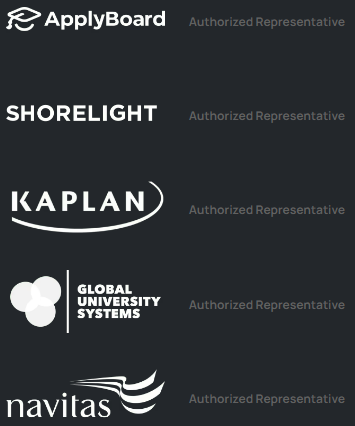A personal statement is your opportunity to make a lasting impression on the scholarship committee. With thousands of applications to review, evaluators look for candidates who stand out through their academic goals, achievements, and personal motivation. A well-written statement can be the deciding factor between securing financial aid and missing out on a valuable opportunity.

Role in Scholarship Selection
Scholarship committees use personal statements to assess more than just academic performance. They want to understand your aspirations, how you contribute to your field, and whether your goals align with the scholarship’s mission. A compelling statement not only highlights your qualifications but also demonstrates your commitment to making a meaningful impact.
How It Impacts Your Application
A strong personal statement can:
- Showcase your unique strengths beyond grades and test scores.
- Communicate your motivation for higher education and career aspirations.
- Prove why you are a deserving candidate for financial support.
- Set you apart from applicants with similar academic credentials.
A weak or generic statement, on the other hand, fails to capture the attention of reviewers and may cause your application to be overlooked.
Key Ingredients of a Winning Personal Statement
A successful personal statement follows a clear structure, tells a compelling story, and avoids common mistakes that weaken its impact.
Structuring Your Statement Effectively
A well-structured personal statement ensures clarity and engagement. It should have:
- A strong introduction that immediately captures attention.
- A detailed main body presenting academic achievements, experiences, and goals.
- A powerful conclusion reinforcing why you are the ideal candidate.
Each section should flow logically, keeping the reader engaged from start to finish.
Showcasing Your Academic Goals & Achievements
Your academic journey plays a crucial role in convincing the committee of your potential. Highlight:
- Specific achievements, such as research projects, awards, or leadership roles.
- How your academic background aligns with your future goals.
- Any challenges you have overcome to succeed in your studies.
Be precise and provide examples rather than making vague statements about ambition.
Avoiding Common Writing Mistakes
Many applicants weaken their personal statements by making avoidable errors, such as:
- Writing a generic essay that lacks personality.
- Using overly complex language instead of clear, direct sentences.
- Failing to provide specific examples of achievements and aspirations.
- Repeating information already present in the application.
Proofreading and seeking feedback can help refine your statement, ensuring it meets the scholarship committee’s expectations.
Step-by-Step Guide to Writing a Perfect Personal Statement
Crafting a Strong Introduction
The introduction sets the stage for your entire statement. It should immediately capture attention and give the reader a reason to continue. Start with a meaningful experience, a thought-provoking question, or a brief personal anecdote that connects to your academic journey. Avoid generic openings like “Ever since I was a child” or “I have always been passionate about…” Instead, focus on a specific moment that shaped your aspirations.
For example, if you’re applying for a science scholarship, you could open with the first time you conducted an experiment that sparked your curiosity. The goal is to provide a glimpse into your motivation without diving into unnecessary details right away.
Writing a Strong Main Body
This section is where you explain your academic background, accomplishments, and future goals. Break it into logical paragraphs, each highlighting a different aspect of your journey.
Start by discussing your academic achievements, but don’t just list them explain their significance. If you won an award, how did it influence your approach to learning? If you participated in research, what did you contribute, and what did you learn? These details add depth to your statement.
Next, connect your experiences to your future aspirations. Describe how your past efforts have prepared you for the challenges ahead and why this scholarship will help you achieve your goals. Be specific about what you plan to study and how it aligns with your ambitions.
Lastly, address any challenges you’ve faced and how you overcame them. Scholarship committees appreciate resilience and determination, so if you’ve navigated obstacles that shaped your academic path, mention them in a way that highlights your perseverance.
Ending with a Powerful Conclusion
The conclusion should leave a lasting impression. Reinforce why you are a strong candidate and express gratitude for the opportunity to apply. Avoid summarizing everything you’ve already said. Instead, end on a forward-looking note, expressing excitement about your future studies and the impact you hope to make.
A good closing statement can tie back to the introduction, creating a sense of completeness. For example, if you opened with a personal anecdote, you can revisit it briefly to show how far you’ve come and where you’re headed next.
How to Write a Personal Statement: Step-by-Step Guide
- Start with a strong opening – Begin with a personal story, a defining moment, or a thought-provoking statement that grabs attention.
- Explain your motivation – Clearly state why you’re passionate about your chosen field and what inspired your academic or career goals.
- Highlight key achievements – Showcase relevant accomplishments, skills, and experiences that make you a strong candidate.
- Demonstrate impact – Instead of listing achievements, explain how they shaped your growth and align with the scholarship’s values.
- Maintain a logical flow – Keep paragraphs connected, ensuring each section builds upon the last for a cohesive narrative.
- Conclude with confidence – Reinforce your enthusiasm, summarize your key strengths, and express your readiness for the opportunity.
- Edit and refine – Proofread multiple times, remove unnecessary details, and ensure clarity. Seek expert feedback before submission.
By following these steps, you can create a personal statement that stands out and effectively conveys your strengths.
Final Touches: Editing & Refining Your Statement
Importance of Proofreading
Even a well-written personal statement can be undermined by grammatical errors and awkward phrasing. Take the time to read your statement multiple times, looking for areas that can be improved. Reading it aloud can help catch mistakes that might not be obvious on paper.
It’s also helpful to take a short break before reviewing your work. Stepping away for a few hours or even a day allows you to return with a fresh perspective, making it easier to spot inconsistencies and areas that need refinement.
How to Get Expert Feedback
Having someone else review your statement can provide valuable insights. A teacher, mentor, or academic advisor can point out areas where your message might not be clear. They can also help ensure that your writing stays focused and engaging.
When seeking feedback, ask specific questions. Instead of a general “What do you think?” try “Does my introduction grab your attention?” or “Do I clearly explain my academic goals?” This targeted approach leads to more useful suggestions.
After incorporating feedback, read through your statement again to ensure it still reflects your voice. While advice from others is helpful, the final version should remain true to your experiences and aspirations.
Are you struggling to perfect your personal statement? UK Academic Help offers expert guidance to ensure your application stands out. Whether you need help structuring your statement, refining your language, or showcasing your achievements effectively, the UK academic writing services can provide the support you need. Get professional assistance today and submit a statement that leaves a lasting impression!
Frequently Asked Questions (FAQs)
1. How long should a personal statement be?
Most personal statements should be around 500-800 words, but always check the specific requirements of the scholarship or institution.
2. What should I avoid in my personal statement?
Avoid clichés, generic statements, and exaggerated claims. Also, don’t simply list achievements explain their significance and impact.
3. Can I use the same personal statement for multiple applications?
While you can use a base version, it’s important to tailor each statement to match the specific scholarship’s values and expectations.
4. How do I make my personal statement stand out?
Use real experiences, show genuine passion, and write in a clear, authentic voice. A strong introduction and a memorable conclusion also help.
5. Should I mention weaknesses or challenges in my personal statement?
Yes, but focus on how you overcame them and what you learned. This shows resilience and personal growth.
6. Is it okay to include humor in a personal statement?
A light touch of humor can make your statement engaging, but avoid anything that might be misinterpreted. Keep it professional and relevant.
7. How can I make my conclusion strong?
Tie it back to your introduction, reinforce your enthusiasm for your field, and express confidence in your ability to succeed.
8. Do scholarship committees really read every personal statement?
Yes, they do. Your statement is one of the key factors that help them decide if you are the right candidate.
9. How many drafts should I write before submitting?
It’s best to go through multiple drafts writing, revising, and getting feedback until your statement is polished and impactful.
10. Can I use quotes in my personal statement?
It’s better to focus on your own words and experiences. If you must include a quote, ensure it directly supports your message and doesn’t overshadow your own voice.




